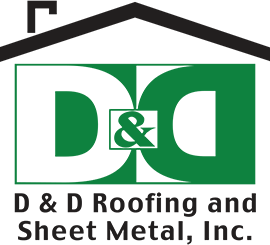In the winter months, homes in Nevada could look like cakes with white icing on top. While the snow looks pretty, it may damage your roof if you let it remain there. Heat from the sun or from the house will make the snow melt, but debris or thick snow may block water from draining down your gutters; the water may then refreeze near the eaves. Through the course of many thaw-freeze cycles, a thick barrier called an ice dam forms.
Ice dams retain water and allow it to seep underneath the shingles. Once this water freezes, the ice expands and pries the shingles off of the roof. Shingles are tightly layered to form a waterproof barrier, so when they’re loosened, a water leak may form. Leaks can promote the growth of toxic mold in your attic and cause wooden substructures to rot.
The damage ice dams cause could cost you thousands of dollars in roof repairs. Thankfully, you can avoid this outcome by using nifty gadgets like roof de-icing cables. While our roofing specialists at D&D Roofing do recommend that you have these installed, there are some pros and cons of using this tool.
Your electricity bill will go up
De-icing cables use electricity to generate heat and melt roof ice and snow. The most basic types activate and maintain a certain temperature once they’re plugged in. These are the most affordable, but they can run up your electricity bill in the long run. Other types of de-icing cables have thermostats to help them self-regulate their temperature. That is, they can reduce power consumption when it’s not so cold outside, but increase heat production when the temperature drops.
Usage tip: During days when it’s extremely cold, it’s best to keep your de-icing cables turned off. This sounds counterintuitive, but since snow would not melt during these occasions, there’d be no water to drain off of your roof. When temperatures rise and start melting snow once again, that’s when you reactivate your de-icing system.
Best installed by professionals
We’re not saying this just because we’re pitching our services here, but because roof installations, especially during winter, entails quite a bit of risk. You must take precautions such as de-icing your setup area to prevent slip-and-fall accidents and clearing your roof of debris and snow. You’ll want to use a ladder with rubberized rungs and have someone keep it steady while you climb. Since de-icing cables are electrical equipment, you must test it first and follow safety protocols like using outdoor GFCI electrical outlets. Last but not least, the cables must be installed in a particular way and with consideration for the sun’s orientation and the general direction of the wind to achieve maximum effectiveness.
Experienced DIYers would find installing these cables easy enough, but if you’re not comfortable working from a great height, then it’s best to call your friendly neighborhood roofers.
Roof de-icing cables are effective, but may need to be installed in stages
When installing these cables, keep in mind that the ultimate goal is to let the water from melting snow flow into your gutter. That is, some ice may still form on your roof, but not so much as to eventually cause damage to your shingles.
After installation, you must monitor your roof because there may be a few odd places beyond the wired area where ice dams would form. When this happens, you’ll need to put up supplemental cables or come up with other ways to fix those problem areas.
For all your winter roofing needs, turn to D&D Roofing. Leave a message or call us at (775) 521-7440.


